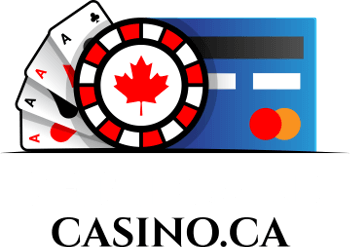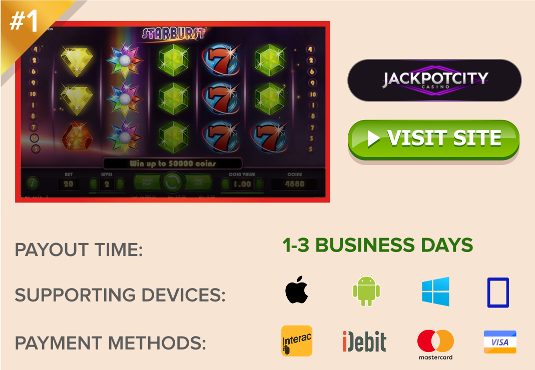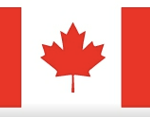Blackjack Switch Rules for the Opportunist
Opportunistic Guide: How to play Blackjack Switch like a pro.

Blackjack Switch is an innovative game that draws a great deal of attention from those who come across it for the first time. After all, the whole premise behind it is what most of us would refer to as “cheating”. How may blackjack games allow players to switch cards around from one hand to the next? Just one – this one.
The game gives opportunistic players the chance to make a better hand – or two better hands – out of a bad situation. If this concept piques your interest, sit back, relax, and prepare to take in a great deal of information. There’s a lot that goes into a solid Blackjack Switch strategy, but first, we have to go over the rules, how switching works, and the available side bets.
How to Play Blackjack Switch
Let’s get started with the basic rules of the game. Blackjack Switch is a multi-hand game by default. Participants must play and wager equally on two separate hands. The second cards in each hand are the only ones that can be exchanged.
For example, let’s say a player is dealt the following two hands:
A-5 and 6-10
The player can only switch the second two cards. Doing so would result in:
A-10 and 6-5
The first hand is now 21, but not a natural blackjack, since it was the result of a switch. The second is an 11, which the player will either hit or double down on, depending on the dealer’s up card (see Blackjack Switch Strategy below).
This is an awfully advantageous rule for players. As such, you can expect a pretty heavy trade-off. In this case, there are two of them. First, a dealer 22 against any non-busted hand is a push. Second, a natural blackjack only pays 1 to 1.
Specific Rules
Blackjack Switch (aka Blackjack Exchange) has been played throughout land-based casinos all over the world for many years, and was mimicked by a number of digital software groups in the last decade or so. For this reason, there are a few rule variations you might come across, each capable of altering the house edge.
The rules defined below are the most common, and will proffer a house edge of 0.58% (99.42% RTP).
- Decks: 6
- Soft 17: Dealer Hits
- Switching: Optional on second two cards only, before any other decisions are made
- Switch to 21: Just a 21, not blackjack
- Doubling: Yes, on any two cards
- Splitting: Yes, up to 3x
- Double after Split: Yes
- Surrender: No
- Dealer Checks for Blackjack: Yes, on Ace or 10
- Dealer 22: Pushes against all but blackjack
- Blackjack Pays: 1 to 1
Typical Side Bets
There are two side bets frequently found in Blackjack Switch. The first, and most common, is the Super Match. The second is called C4. Both revolve around making poker hands out of the first four cards dealt to the player (first two cards in each hand). If you find something different, don’t worry. You’ll probably find it detailed on our comprehensive Side Bets Guide.
Super Match Side Bet
| First Four Cards Hand Requirements | Payout |
| 4 of a Kind | 40 : 1 |
| 2 Pair | 8 : 1 |
| 3 of a Kind | 5 : 1 |
| Pair | 1 : 1 |
| House Edge = 2.55% |
C4 Side Bet
| First Four Cards Hand Requirements | Payout |
| 4 of a Kind | 500 : 1 |
| Straight | 200 : 1 |
| Flush | 12 : 1 |
| 2 Pair | 10 : 1 |
| 3 of a Kind | 8 : 1 |
| House Edge = 14.32% |
Blackjack Switch Decision Strategy
This particular game has a number of strategies to be applied. We’ll start with a basic hand-playing strategy that assumes you’re not switching hands, or have already done so. The next three basic strategy charts show how to decide any hand that is a hard total, a soft total, or pairs.
How to Decide Hard Hands
If you have a hard total (any hand that doesn’t have an Ace counting as 11), use this chart to base your decisions on the dealer’s face-up card.
| Hard Total | Correct Action by Situation |
| 8 & Under | Hit |
| 9 | Double on Dealer’s 6; otherwise Hit |
| 10 | Double on Dealer’s 2-8; otherwise Hit |
| 11 | Double on Dealer’s 2-9; otherwise Hit |
| 12 | Stand on Dealer’s 5-6; otherwise Hit |
| 13 | Stand on Dealer’s 3-6; otherwise Hit |
| 14-16 | Stand on Dealer’s 2-6; otherwise Hit |
| 17-21 | Stand |
How to Decide Soft Hands
If you have a soft total (any hand that does have an Ace counting as 11), use this chart to base your decisions on the dealer’s face-up card.
| Soft Total | Correct Action by Situation |
| 15 & Under | Hit |
| 16 | Double on dealer’s 6, otherwise Hit |
| 17 | Double on dealer’s 5-6, otherwise Hit |
| 18 | Hit against 9-10; Double on 5-6; otherwise Stand |
| 19 to 21 | Stand |
Conditions for Splitting Pairs
If you have a pair, the following chart will direct you in splitting or any other decisions to be made, based on the dealer’s up-card.
| Pair | Correct Action by Situation |
| Ace-Ace | Split |
| 2-2 | Split against 5-7; otherwise Hit |
| 3-3 | Split against 5-7; otherwise Hit |
| 4-4 | Hit |
| 5-5 | Double against 2-6; otherwise Hit |
| 6-6 | Split against 4-6; otherwise Hit |
| 7-7 | Split against 3-7; Stand against 2; otherwise Hit |
| 8-8 | Split against 2-9; otherwise Hit |
| 9-9 | Split against 4-6 or 8-9; otherwise Stand |
| 10-10 | Stand |
Knowing When to Switch
Now here comes the tricky part – knowing when to switch your cards. If you happen to own Arnold Snyder’s The Big Book of Blackjack, he offers a great strategy that’s easy to understand and employ. Of course I can’t tell you how to follow it, due to copyright laws. However, I can suggest another method. It’s more advanced, but with a little practice, you’ll know how to play Blackjack Switch like a pro in no time.
This chart isn’t as complicated as it looks, so long as you understand what you’re looking at. The left column (going down) is your hand value. The top row (across) shows the dealer’s face-up card. The numbers in the middle – and this is the tricky part – depict the point value of each hand.
For example, you’ll see that 9-9 is worth a value of “1” in all situations, except against a dealer’s 8, when the value rises to “2”.
How to Use the Switching Chart
- First, add the value of both of your hands against the dealer’s up-card.
- Next, add up the expected value of both of your hands, if you were to switch their second cards.
- Whichever combined value is higher, those are the hands you should move forward with.
- In case of a tie, evaluate the highest possible single hand of all four options and choose that set-up (the goal being to win at least one hand). For instance, 21 and 12 is better than 18 and 15.
- Once your hands are set, use the strategy charts above to decide how to play each hand.
Blackjack Switching Chart
| HAND | 2 | 3 | 4 | 5 | 6 | 7 | 8 | 9 | 10 | A |
| 21 | 3 | 3 | 3 | 3 | 3 | 3 | 3 | 3 | 3 | 3 |
| 20, A9 | 2 | 2 | 2 | 2 | 2 | 3 | 3 | 3 | 2 | 2 |
| 19, A8 | 1 | 1 | 1 | 1 | 1 | 3 | 3 | 2 | 1 | 1 |
| 18, A7 | 1 | 1 | 1 | 1 | 1 | 2 | 2 | 1 | 1 | 1 |
| 12-17 | 0 | 0 | 0 | 0 | 0 | 0 | 0 | 0 | 0 | 0 |
| 11 | 2 | 2 | 2 | 2 | 2 | 2 | 2 | 2 | 2 | 2 |
| 10 | 2 | 2 | 2 | 2 | 2 | 2 | 2 | 2 | 2 | 2 |
| 9 | 1 | 1 | 1 | 1 | 1 | 1 | 1 | 1 | 1 | 1 |
| 8 | 1 | 1 | 1 | 1 | 1 | 1 | 1 | 1 | 1 | 1 |
| 5-7 | 1 | 1 | 1 | 1 | 1 | 1 | 1 | 1 | 1 | 1 |
| SOFT | ||||||||||
| A9 | 2 | 2 | 2 | 2 | 2 | 3 | 3 | 3 | 2 | 2 |
| A8 | 1 | 1 | 1 | 1 | 1 | 3 | 3 | 2 | 1 | 1 |
| A7 | 1 | 1 | 1 | 1 | 1 | 2 | 2 | 1 | 1 | 1 |
| A2-A6 | 1 | 1 | 1 | 1 | 1 | 1 | 1 | 1 | 1 | 1 |
| PAIRS | ||||||||||
| AA | 2 | 2 | 2 | 2 | 2 | 2 | 2 | 2 | 2 | 2 |
| 99 | 1 | 1 | 1 | 1 | 1 | 1 | 2 | 1 | 1 | 1 |
| 88 | 0 | 0 | 0 | 1 | 1 | 2 | 1 | 0 | 0 | 0 |
| 77 | 0 | 0 | 0 | 1 | 1 | 0 | 0 | 0 | 0 | 0 |
| 66 | 0 | 0 | 1 | 1 | 1 | 0 | 0 | 0 | 0 | 0 |
| 33 | 1 | 1 | 1 | 1 | 1 | 1 | 1 | 1 | 1 | 1 |
| 22 | 1 | 1 | 1 | 1 | 1 | 1 | 1 | 1 | 1 | 1 |
 Jackpotcity.com is our editorial pick for your gaming needs. Currently offering an entire suite of casino games, as well as a wide range of Canadian deposit options, JackPotCity truly offers world-class gaming.
Jackpotcity.com is our editorial pick for your gaming needs. Currently offering an entire suite of casino games, as well as a wide range of Canadian deposit options, JackPotCity truly offers world-class gaming.





